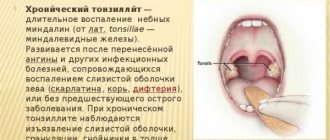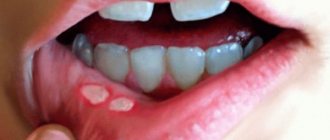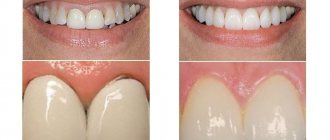Causes of inflammation of the tonsils
Possible causes of inflammation of the tonsils
There are many causes of inflammation of the tonsils. Most often this disease occurs due to:
- Hypothermia.
- Contact with infected sick people or objects.
- Focal inflammation in the nasal or oral cavity.
- Poor or untimely nutrition.
If a patient has purulent sinusitis, this in most cases leads to inflammation of the tonsils. Under harmful working or living conditions, which are characterized by dust or gas contamination, this disease can also develop. A common cause of the disease is contaminated unboiled water that a person drinks regularly. If the human body lacks vitamins or proteins, this very often leads to an inflammatory process.
People with weak immunity and low body resistance are most often affected by the disease.
The cause of the disease can be tonsillitis, which has a chronic form. It is a focal infection that occurs as a result of scarlet fever, sore throat, measles, etc. With the development of this disease, the mucous membrane of the pharynx and tonsils become inflamed. Inflammation of the tonsils in a patient may occur as a result of an acute form of tonsillitis. It occurs as a result of exposure to microbes: staphylococci, streptococci.
There are many reasons for inflammation of the tonsils, which directly depend on a person’s lifestyle and the performance of the immune system.
Symptoms
Signs of the disease
Inflammation of the tonsils is characterized by the presence of fairly extensive symptoms. With the development of this disease, most patients complain of aches throughout the body and general malaise. Also during this period, pain in the throat area is observed. Most patients experience a headache. Almost all patients with inflammation of the tonsils experience an increase in body temperature.
Signs of the disease are manifested not only by the patient’s physical condition, but also externally. When examining a patient by an otolaryngologist, he notices that the tonsils have changed their color. If the patient experiences an inflammatory process, the tonsils become bright red. The doctor also notices a significant increase in the size of the tonsils. In size, they resemble not almond grains, but walnuts. The tonsils are characterized by looseness. Most patients experience scar adhesions between the tonsils and arches of the palate.
When the disease appears, doctors can diagnose the appearance of a yellowish-white plaque and purulent plugs, which are characterized by an unpleasant putrefactive odor.
Under the human jaw there are lymph nodes that increase in size during the inflammatory process.
The patient can independently feel only part of the symptoms that give him discomfort. When they appear, the patient must see an ENT doctor.
Causes, pathogens, forms of the disease
The reason is an attack of the body by an acute respiratory infection. Common pathogens:
- staphylococcal florastreptococcus pneumococcus
It is worth noting the seasonality of the incidence, since the occurrence of inflammation of the tonsils is influenced by excessive cooling of the body, which happens mainly in autumn and winter or early spring. Children and adolescents are at risk because the immunity of adults is considered stronger.
After infection, pathogens enter the mucous membrane of the tonsils, and the organ tries to neutralize them. If the immune system is strong and a small amount of the virus is ingested, the process will pass without consequences. If the tonsils cannot cope, acute inflammation develops.
Tonsillitis can be acute or chronic.
Acute is called sore throat (the name also has Latin roots). The main pathogen detected is beta-hemolytic streptococcus. In rare cases, Staphylococcus aureus or streptococci are recorded.
The acute inflammatory process in some cases concerns the lingual and/or pharyngeal tonsil. The infection can reach the tonsils not only through airborne droplets, but from nearby localized infectious and inflammatory foci. This happens if you don’t pay attention to a developing runny nose, sinusitis, or dental caries.
Difficulty in new breathing is also noted among the risk factors.
Because in such cases, a person opens his mouth so that a sufficient amount of oxygen enters the body. Then he literally swallows microbes along with the inhaled gas composition of the air. When the body's defenses are weakened, a stable infectious focus is formed, which leads to chronic tonsillitis, which can worsen from time to time.
Toxins that are formed during the development of the infectious process enter the lymph and blood, which contribute to their spread to other organs and tissues. For this reason, complications are often recorded:
- nephritis (pathological process in the kidneys) infectious polyarthritis treumatism sepsis (rare)
Drug treatment
Treatment of pathology with sprays and tablets
Treatment of the disease directly depends on its causes. In most cases, it is aimed at eliminating the problem that caused the disease. Inflammation must be treated immediately after the first signs appear. Antibiotics and antiviral drugs are most often used for treatment using traditional methods.
Antibacterial drugs that are produced in the form of aerosols are quite effective. Such drugs include Ingalipt, Hepilor, Hexasprey, etc. During the treatment of inflammation of the tonsils, the patient must regularly dissolve throat tablets. Doctors recommend using Faringosept and Strepsils in this case.
Treatment of inflammation of the tonsils cannot be done without rinsing. Most often they are produced using Chlorophyllipt, Furazzilin.
As this disease develops, the patient’s body weakens, which is why it is necessary to take vitamins.
They are selected in accordance with the individual characteristics of the patient’s body. Treatment should be carried out only by the attending physician. This is explained by the fact that it is necessary to correctly select medications.
How to reduce?
In order to reduce inflamed tonsils, you need to start treatment in a timely manner. Medicines and traditional methods of treatment will help in this matter. Let's consider all methods of therapy.
Gargling
Many solutions relieve inflammation and have a bactericidal effect.
To shrink the organ, you should first use an antiseptic gargle, which will help free the tonsils from plaque and allow the tonsils to shrink in size.
- Rinse with calendula solution 4-5 times a day (1-2 tsp per 200 ml of water). First, use warm water, gradually lowering the temperature to absolutely cold. This way you harden the adenoids.
- A solution of hydrogen peroxide 3% (a teaspoon of peroxide per glass of water).
- Propolis infusion (40 drops of tincture per 200 ml of warm water).
- Furacilin solution (2 tablets per 200 ml of warm water).
- Effectively rinse the follicles with a penicillin solution (every other day, course 10-15 days).
Antibiotic therapy
Use antibiotics in combination with immune-strengthening drugs.
Treatments such as filling follicles with pastes and antibiotic therapy are used. The pharmacy market offers many antibiotics that will help you quickly and efficiently cope with the disease. As a rule, macrolide antibiotics are prescribed. However, remember that antibiotics can not only “suppress” the disease, but also harm the body, especially a fragile child’s body. Therefore, under no circumstances should you self-medicate. In addition, antibiotic therapy should be accompanied by the intake of bifidobacteria and lactobacilli, which can support the baby’s intestinal microflora.
Remember: an antibacterial drug is prescribed only by a doctor, taking into account the individual characteristics of the body. The course of treatment should last as long as the doctor prescribes; interrupting the medication or prolonging it on your own is strictly prohibited!
Physiotherapeutic methods
Physiotherapeutic methods aimed at healing tonsils. These include:
Rinsing the tonsils removes dead bacteria.
- UHF therapy eliminates swelling, especially of the lymph nodes.
- Ultrasound is the effective action of ultrasonic waves aimed at eliminating foci of infectious disease. Ultrasound waves effectively eliminate plaque on the tonsils, after which the organs decrease in size.
- Ultraviolet irradiation together with sanitation makes it possible to eliminate the infection so that the pharyngeal gland shrinks and returns to its original size.
- Laser therapy. Laser irradiation reduces swelling. This method has no contraindications. Not only inflammation will decrease, but also the volume of lymphoid tissue.
People's first aid kit
Potato vapors have an antiseptic effect.
There are many different folk remedies that help shrink tonsils. To effectively treat tonsillitis, take 1 glass of beet juice, mix with 1 tablespoon of vinegar, infuse, and then rinse your mouth and throat.
For inhalation, you can use potatoes (with the addition of soda and 2 validol tablets). The potatoes must be thoroughly washed and put on fire to cook. When it is cooked, you need to ceiling it, and then, covering your head, inhale the steam through your nose for 10-15 minutes.
To shrink the lymph nodes, it is recommended to place a warming bandage in the form of a woolen scarf on the neck.
Traditional medicine in the treatment of inflammation
Traditional medicine tips for treating the disease
Many patients for the first time encounter such a condition as inflamed tonsils; they do not know what to do in this case. Very often traditional medicine helps to overcome the disease.
With the help of traditional medicines, not only the symptoms are alleviated, but the treatment process is also significantly accelerated:
- When the tonsils are inflamed, you need to drink a lot of warm drinks. To avoid burns, it is important that they are not very hot.
- For drinking, it is best to use tea, which consists of viburnum, rose hips, chamomile, and lemon.
- If the patient has plaque or pustules on the tonsils, they must be rinsed regularly. For this purpose, special antiseptic solutions are used.
- You can also prepare a medicinal rinse based on sea salt. To do this, take a glass of warm water and add a teaspoon of sea salt to it. The solution is stirred until the salt dissolves and is used to gargle.
- A highly effective remedy is an iodine-based rinse. To prepare it, you need to take a glass of warm water, add a pinch of baking soda and sea salt and a few drops of iodine. This product is used as a gargle three times a day.
- Ordinary honey has a high effect on inflamed tonsils. You should eat one tablespoon of it every day when the first signs of the disease appear. If inflammation is accompanied by the release of pus, then honey is added to medications that are used to gargle.
Traditional medicines are characterized by a high level of effectiveness in treating inflammation of the tonsils. Despite this, you should consult a doctor before using traditional medicine.
A child has enlarged tonsils: treatment. what to do?
Enlarged tonsils in children are quite common. In this case, both the paired palatine tonsils, also known as tonsils, and the pharyngeal tonsil, popularly called adenoids, can hypertrophy.
The problem can be dealt with using medications and folk remedies or through surgery. But in any case, consultation with a specialist is necessary, since this threatens the development of serious consequences.
The main task of these organs, located at the entrance to the pharyngeal ring, is to protect the respiratory organs from the penetration of pathogenic microorganisms into them.
They produce special substances that can destroy microbes, as well as lymphocytes.
It is these cells that play a primary role in the formation and maintenance of immunity. Only the tonsils are able to differentiate the type of pathogen that has entered the body and transmit this information to the immune system.
The child has enlarged tonsils: photo
Thanks to this, even before the microorganism multiplies and serious inflammation develops in the body, highly specific antibodies begin to be produced in increased quantities, rushing to the affected area to destroy the infectious agents.
That is why these organs are no longer removed for preventive purposes, but on the contrary, they try to preserve them with all their might, even with the development of chronic diseases.
If a child has enlarged tonsils: causes of inflammation
The main reason that tonsils grow, regardless of their location, is inflammation of a bacterial nature. In most cases, it is caused by streptococci and staphylococci.
Healthy tonsils in a child: photo (right)
Large tonsils are usually observed after a sore throat, that is, an acute inflammatory process. If treatment is not carried out correctly or is not completed, microorganisms can develop resistance to the drugs used and continue to infect the tissues of the oral cavity.
Thus, after the disease, chronic tonsillitis gradually begins to develop, which is the main cause of hypertrophy of the tonsils.
Coping with it completely is far from easy, and in severe cases, only timely surgery can protect the body from the occurrence of severe and life-threatening complications.
However, sometimes the cause of swollen tonsils can be infectious diseases such as:
- diphtheria;
- scarlet fever;
- typhoid fever;
- ARVI.
Also in children, the pharyngeal tonsil often enlarges. If it has grown, doctors diagnose adenoiditis.
This disease is in most cases first diagnosed in children at 2 or 3 years of age. But, unlike damage to the tonsils, adenoids often arise against the background of endocrine or autoimmune disorders.
The following can also trigger the development of the disease:
- poor nutrition that does not meet the needs of a growing body for vitamins and other substances;
- unsatisfactory living conditions;
- frequent transmission of infectious diseases.
Source: nasmorkam.net
Symptoms
Typically, a red throat with swollen glands is rarely the only sign of problems in the body. In addition to the fact that red veins, a white, gray or yellowish coating appear on them, they also:
- Sore throat when at rest or when swallowing;
- difficulties arise when swallowing, as expanded loose tissues interfere with the free passage of food;
- lethargy and irritability appear;
- lymph nodes enlarge;
- body temperature rises;
- There is a nasal voice.
Depending on the developing infection and the degree of involvement of other organs of the respiratory system, a dry or wet cough may additionally be present. In severe cases, when the tissue is too swollen, breathing difficulties may occur.
As a result, the baby will suffer not only from lack of air, but also from sleep problems, snoring, and fear of suffocation. In such situations, it is necessary to show the child to the doctor as soon as possible and carry out a number of measures to eliminate the swelling.
However, sometimes even against the background of the fact that the child has large tonsils, the inflammatory process can occur without fever or discomfort in the throat. Other signs may be present to a greater or lesser extent, which is not always a positive indicator.
This may indicate the disease has become chronic. Therefore, the tonsils are often enlarged, but do not hurt.
Degrees of tonsil enlargement
Depending on the size of these organs, there are 4 degrees of hypertrophy:
1
The tonsils occupy 1/3 of the space between the edge of the anterior palatine arch and the center line of the pharynx. This position of the organs has virtually no effect on the state of nasal breathing, which may worsen slightly during sleep. Pathology at the 1st stage can be suspected by the slightly open mouth of a child in a dream.
2
The tonsils cover half of the vomer (Located in the nasal cavity). This is accompanied by discomfort while eating and opening the mouth at night.
3
Most of the vomer is covered by one or another enlarged tonsil. Difficulties in swallowing and breathing are typical for this degree of hypertrophy.
4
The affected gland occupies all the free space and completely covers the vomer, and with bilateral damage they can even overlap each other. This is an indication for surgical intervention, since it makes proper nutrition and breathing almost impossible.
Enlarged tonsil on one side
Sometimes one of the two tonsils is enlarged: the left or the right.
This is also accompanied by the appearance of a sore throat and redness of the tissues, but if it is enlarged on one side in a child, but the throat does not hurt, this in the vast majority of cases is a clear sign of a chronic infection.
Thus, an enlarged tonsil on one side may indicate the same diseases as listed above, but tonsils of different sizes may also indicate that an injury has been sustained or is forming:
- pharyngeal abscess;
- phlegmon.
Only after a thorough examination is the doctor able to say what it means when the tonsil is enlarged on one side and prescribe treatment appropriate to the situation.
If one tonsil is larger than the other, this more than ever requires examination by a specialist, because the patient may need urgent surgical intervention.
Otherwise, the abscess may rupture and its contents will spill out either into the oral cavity and pharynx, or into the thickness of the tissues. The latter option poses the greatest danger, since this is always fraught with the development of complications, one of which is sepsis.
When should you see a doctor? How dangerous is the pathology?
Swollen tonsils in a child always require timely consultation with a specialist, and if pathologies are detected, full treatment. Indeed, in the absence of competent therapy, a child may develop quite serious health problems:
- the occurrence of disturbances in the structure of the facial bones;
- bite distortion;
- violation of chest development;
- anemia;
- mental retardation (in especially severe cases).
To avoid such sad consequences, it is necessary, when the first signs of tissue proliferation appear, to contact a pediatric otolaryngologist and strictly follow all his recommendations.
You should immediately make an appointment with an ENT specialist if your baby constantly:
- choking while eating;
- breathes through his mouth and snores in his sleep;
- nasal, has problems with pronunciation;
- often catches colds;
- suffers from inattention and fatigue.
How to treat enlarged tonsils in a child?
How to treat pathology depends on the causes of its occurrence. The choice of treatment tactics is determined by the doctor on an individual basis.
In most cases, patients are prescribed:
1
Gargling with antiseptic solutions (Furacilin, Givalex, Angilex, Chlorophyllipt alcohol, Chlorgesidine, Miramistin and others). This measure is necessary to wash away pathogenic microflora from the surface of the mucous membranes.
2
Inhalations. Homeopathic remedies, for example Tonsilgon, or synthetic drugs, in particular Rotokan, Malavit, Dioxidin, can be used as solutions for inhalation therapy. They help eliminate the inflammatory process and swelling of tissues.
3
Antibiotics for topical use (Polydex, Isofra, Rinil) are prescribed if the bacterial nature of the disease is confirmed.
4
Systemic antibiotics (Amoxicillin, Vilprafen, Sumamed, Ospamox, Flemoxin Solutab, Tetracycline, Doxy-M) are used when topical drugs are ineffective in especially severe cases.
5
Corticosteroids. Drugs in this group are indicated when a child’s tonsils are very enlarged; treatment is carried out under the supervision of a specialist, and its duration usually does not exceed a week. However, in particularly severe cases, a longer period of time – up to several months – may be required.
6
Homeopathic remedies (Umkalor, Tonsilgon) are used to increase immunity.
For tonsillitis accompanied by the formation of purulent plugs, rinsing the tonsils with antiseptic solutions in an ENT office is often prescribed. The procedure can be performed on different devices and usually requires at least 10 sessions to achieve positive results.
Treatment of enlarged tonsils in children with folk remedies
As an addition to the main therapy, the otolaryngologist may recommend the use of traditional medicine.
In many situations, they give good results and help the growing body recover faster, but it is usually not possible to completely cure the disease with their help.
But before the first use, you must make sure that your baby is not allergic to the selected components. After all, children are more prone to developing allergic reactions than adults.
To cope with the problem, you can use:
1
Propolis tincture. 20 g of beekeeping product is finely ground and added to 100 ml of vodka. After 3 days they begin to use it for gargling. Procedures should be carried out before meals. The tincture has an antiseptic and wound-healing effect.
2
A mixture of sugar and lemon juice. Mix 20 ml of juice and 20 g of granulated sugar in a glass container. Take it three times a day to strengthen the immune system.
3
A decoction of sage leaves with garlic. The raw materials are crushed and poured with a liter of boiling water. Place the container in a steam bath and leave for 25 minutes. The finished product is left to infuse and filtered after 45 minutes. Take it 50 ml three times a day or use it for rinsing.
4
Sea buckthorn oil. It has pronounced anti-inflammatory, regenerating and immunostimulating properties. It is recommended to consume 1 teaspoon daily. During ingestion, it is possible to lubricate almost all areas of the tonsils, which helps reduce unpleasant symptoms and accelerate the elimination of inflammation.
Dr. Evgeny Olegovich Komarovsky recommends treating inflamed tonsils in a child under the supervision of a pediatrician or ENT specialist. As for what parents should do before visiting the doctor, he advises:
- bed rest if the baby is weak;
- drinking plenty of water;
- regular ventilation of the nursery and wet cleaning;
- for fever, give paracetamol and ibuprofen.
In case of chronic inflammatory processes, the doctor recommends, in the absence of exacerbations, in moderate quantities, but regularly give the baby ice cream, cold drinks, etc. This helps to harden the body and “train” the tonsils. [ads-pc-1][ads-mob-1]
How to reduce tonsils in a child without surgery?
For chronic diseases, physiotherapy is indicated. As part of this, patients are often prescribed ultrasound treatment. This method is considered highly effective and can often reduce the severity of hyperemia and avoid surgical intervention.
Ultrasound treatment of tonsils in a child allows:
- cleanse them of accumulations of pus;
- reduce the intensity of the inflammatory process;
- accelerate tissue regeneration.
Magnetic therapy is also indicated. The essence of the method is the influence of a magnetic field, which achieves:
- anesthetic;
- anti-inflammatory;
- bacteriostatic;
- sedative effect.
Use of antibiotics
Inflammation of the tonsils - antibiotics: types and applications
Treatment of the inflammatory process should be carried out with antibiotics. Most often, for inflammation of the tonsils, medications that belong to the penicillin group are used.
The most common applications are:
- Ampicillin;
- Amoxicillin, etc.
These drugs belong to the category of semisynthetic antibiotics, which belong to the penicillin group.
Medicines block transpeptidase enzymes, which are located in bacterial membranes.
If the patient is contraindicated for the introduction of these drugs into the course of treatment, then they are replaced with Doxocycline, Cephalexin. These drugs belong to the category of semisynthetic antibiotics, which are intended for systematic use. They provide a bacteriostatic effect, as they have a detrimental effect on the protein synthesis of pathogens.
Useful video - Sore throat: causes and treatment.
If complications occur, the patient may be given intramuscular antibiotics. Regardless of the drug used for treatment, it should be taken for 7 to 10 days.
Treatment
The reasons may vary. Based on these, treatment options are selected. There are many diseases that cause inflammation of the tonsils. Treatment should begin from the very first days when symptoms were detected. Moreover, many diseases are radically different from each other. It makes no sense to treat viral inflammation with antibiotics, for example. But the usual frequent drinking of warm water and constant ventilation of the room can quite quickly “put back on their feet” a patient who has inflammation of the tonsils.
Antibiotic treatment is effective when a bacterial infection develops. Inflammation caused by these microorganisms can be recognized during the initial examination. White plaque, pustules, high fever that lasts up to 5 days and affects the tonsils - all these are symptoms of streptococcus. At the same time, the correct prescription of an antibiotic is quite difficult, since the infection can be highly resistant even to the latest drugs. A smear from the mucous membrane of the throat (otherwise known as a bacterial analysis) provides detailed information about the disease, thanks to which you can find out which antibiotic is needed for this particular case.
But it also happens that antiviral drugs and antibiotics do not help. Bacterial infections can often be confused with fungal infections of the tonsils. They are distinguished by a cheese-like coating throughout the entire oral cavity. An accurate diagnosis can only be made after laboratory analysis. Treatment of such diseases is carried out by treating the affected tonsils and oral cavity with a conventional antifungal solution.
Possible complications
Treatment of inflammation of the tonsils should be carried out immediately after the first symptoms appear. Otherwise, patients may experience complications. Most often, this disease provokes deterioration in the performance of the heart and joints. In some patients, deterioration of the kidney condition is observed due to untimely treatment.
If the inflammation of the tonsils constantly spreads into the surrounding tissues, then their removal is prescribed. If the disease has a purulent process, then it can spread to the heart and lungs. This condition is very dangerous not only for the health, but also for the life of the patient.
When the purulent process spreads to the surrounding tissue, patients may experience a purulent abscess.
Inflammation of the tonsils is a rather dangerous disease that not only causes discomfort in patients, but can also cause serious complications. That is why it is necessary to carry out timely treatment of the disease only after consulting a doctor.
What to do if you have a severe sore throat? — The best treatment methods
Surgery
If a child constantly suffers from tonsillitis or tonsillitis, against the background of which the size of the tonsil changes, doctors may recommend surgery to remove them.
Stages of tonsillectomy: a - incision with the tonsil pulled to the medial side; b — separation of the tonsil; c — placing a loop on the tonsil.
A tonsillectomy is the removal of an organ. The essence of the operation is tearing out the enlarged pharyngeal tonsil. It is impossible to completely tear out the pharyngeal tonsil; there is always the possibility that the adenoids will appear again.
If large palatine tonsils do not cause serious discomfort to the child or interfere with his breathing during sleep, doctors advise parents to monitor him. If the patient's condition worsens over time, the doctor is obliged to perform a tonsillectomy.
Comments (5)
Snezhana
04/07/2017 at 13:09 |
I already know that a sore throat must be treated immediately, otherwise complications can occur. I already had this, high fever and sore throat. Do not want anymore. I immediately dissolve Trachisan 5-6 times a day and simply get rid of the infection. And it doesn’t go down to the bronchi either.Answer
Julia
12/21/2017 at 20:33 |
I dissolve strepsil, do you think this will help?
Answer
Diana
11/20/2018 at 10:43 am |
To be honest, I tried so many lozenges for a sore throat, but I settled on Anti-Sore throat Formula, since this remedy, with its action, put my throat in order in a few days, and all because it reduces both pain and inflammation, in general affects bacteria. Now I just take it)))
Answer
Katerina
20.11.2018 at 11:50 |
Thank you for the article.
Answer
Nika
05.12.2018 at 06:56 |
Diana, thank you for your comment. By the way, I bought the Anti-Sore Throat Formula and started using it for a sore throat. I breathed cold air through my mouth on the street, and my throat began to hurt. True, now I’m dissolving the pills and it’s much easier for me. Thanks again.
Answer
Forms of the disease
Sore throat comes in the following forms:
- follicularcatarrhalphlegmonouslacunar
Catarrhal disease is considered mild, the body temperature rises slightly, the tonsils are more or less red, and there is a slight sore throat. The follicular form is considered a slightly more serious form, the body temperature is higher than in the cases described above, a sore throat can be felt even in the ears, white dots are observed on the tonsils, which in the medical literature are called purulent follicles.
The lacunar form of the disease is also characterized by symptoms of inflammation, but purulent plaque forms in the lacunae of the tonsils. The phlegmonous form is the most serious, characterized by the formation of an abscess (mostly one-sided), an increase in body temperature to very high values.
Doctors rarely record inflammation of the lingual tonsil. The same symptoms appear as with the forms of the disease described above.
Only the localization of inflammation and pain is different. Any movement of the tongue leads to pain. The patient has difficulty swallowing, chewing, and speaking clearly.
Inflammation of the pharyngeal tonsil is known as adenoiditis. It can occur as an independent nosological form, or in parallel with the inflammatory process in the palatine tonsils.
There are two forms of adenoiditis: acute and chronic. The disease can develop if the infection came from the environment, or if it was already in the body and penetrated the pharyngeal tonsil from another source. Acute inflammation of the pharyngeal tonsil mainly occurs with enlarged adenoids.
The main clinical manifestations are high fever, stuffy nose, mucopurulent discharge in the nasopharynx. When the auditory tube is involved in the process, symptoms such as hearing loss and ear pain appear. The chronic form of the disease in question is a complication of acute adenoiditis.
There is a slight increase in temperature, in general the patient feels unwell, has a headache, and has little strength. Characterized by decreased appetite and poor sleep. At night, a person begins to cough because pus flows out of the tonsil affected by the pathological process, which causes irritation of the back wall of the pharynx.
Surgery to remove tonsils
The importance of the tonsils cannot be underestimated. We found this out at the very beginning of the article. The main goal of any therapy is to try to reduce the tonsils without surgery and preserve them as an organ of the immune system. Many adult patients mistakenly believe that they will have less pain after surgery. It is a myth! Yes, the tonsils will stop bothering you. But now the infection from the outside will enter the pharynx and further into the respiratory tract without encountering any obstacle, which will not have the best effect on the incidence of respiratory tract diseases.
The operation to remove the tonsils is called tonsillectomy.
Sign up for a service to eliminate an itchy throat right now!
Certain indications are required for the operation. The patient's fatigue due to frequent exacerbations and unpleasant symptoms is not such an indication.
Surgical intervention is prescribed in the following cases:
- recurrence of sore throats more than four times throughout the year;
- a peritonsillar abscess that has occurred;
- poor performance of rheumatic tests;
- complications on other organs and systems of the patient.
Before deciding to undergo surgery, it is necessary to try to treat a child or adult patient conservatively, that is, to reduce the tonsils without surgery.










